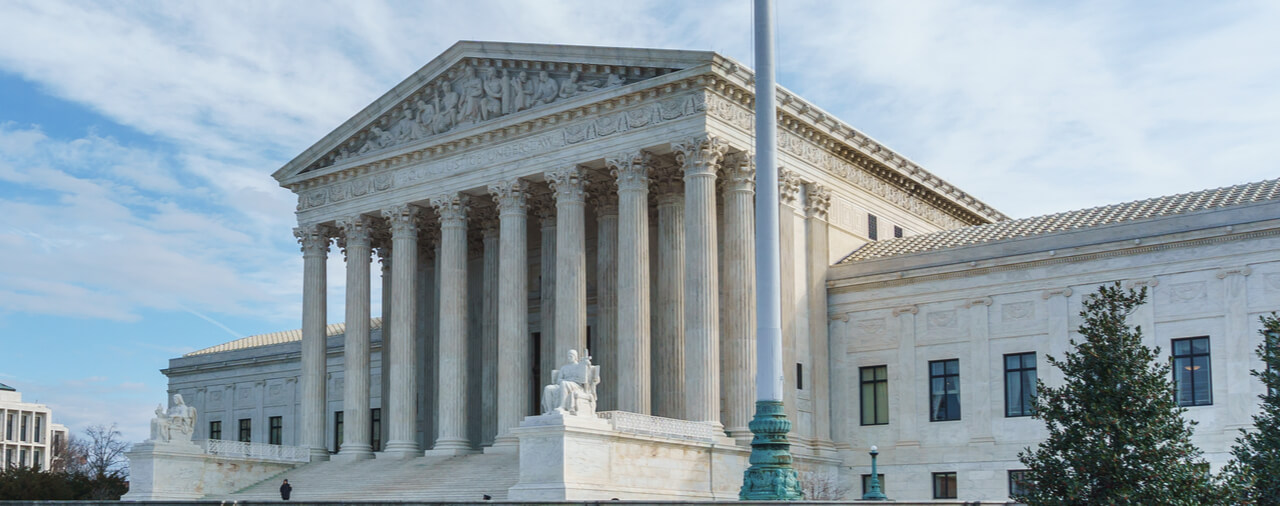Potential Supreme Court Nominee Neil Gorsuch on Chevron Deference
Introduction
With President Donald Trump now ensconced in the White House, we can expect to find out who he will nominate for the open Supreme Court seat that was created with the death of Justice Antonin Scalia last year [see blog]. Many have suggested that the two leading candidates for the vacancy are Judge Bill Pryor of the Eleventh Circuit and Judge Diane Sykes of the Seventh Circuit, in part because President Trump himself mentioned both of these judges by name in a primary debate in early 2016.
However, on CBS This Morning, CBS Chief Legal Correspondent Jan Crawford stated that her sources have indicated that the current frontrunner for the vacancy is Judge Neil Gorsuch of the Tenth Circuit.1 A summary look at Judge Gorsuch's record makes it easy to see why those of us who admired Justice Scalia would be excited to see him picked by President Trump. Eric Citron of SCOTUS blog notes the extensive similarities found in the judicial philosophies of Judge Gorsuch and Justice Scalia in a long profile on Judge Gorsuch.2 Interestingly, however, Citron notes one “notable difference” that appears when studying the decisions authored by Judge Gorsuch:
The notable exception is one prominent concurrence last August, in Gutierrez-Brizuela v. Lynch, in which Gorsuch criticized a doctrine of administrative law (called Chevron deference) that Scalia had long defended. Even here, however, there may be more in common than meets the eye.
In this article, we will examine Judge Gorsuch's position on Chevron deference through his writings in Gutierrez-Brizuela and in other cases.
Overview of Gutierrez-Brizuela and De Niz Robles
Gutierrez-Brizuela v. Lynch, 834 F.3d 1142 (10th Cir. 2016) [PDF version] was a case concerning immigration law. Specifically, it addressed whether the Board of Immigration Appeals' (BIA's) decision in the Matter of Briones, 24 I&N Dec. 355 (BIA 2007) [PDF version] — which restricted eligibility for section 245(i) adjustment of status [see article] — could be applied retroactively. The Tenth Circuit had previously found that Briones did not apply retroactively in De Niz Robles v. Lynch, 803 F.3d 1165 (10th Cir. 2015) [PDF version]. De Niz Robles was also authored by Judge Gorsuch, and you can read about his decision — along with its extensive discussion of Chevron U.S.A., Inc. v. Natural Resources Defense Council, Inc., 467 U.S. 837 [PDF version] — in our full article on the case [see article]. In Gutierrez-Brizuela, Judge Gorsuch wrote both the opinion of the Court — finding that the Board's decision was inconsistent with De Niz Robles — and a concurring opinion discussing Chevron deference more broadly (which is the part of the case decision to by Citron in the SCOTUS blog profile).
Judge Gorsuch's Concurring Opinion in Gutierrez-Brizuela
In Judge Gorsuch's concurring opinion, he stated:
But the fact is Chevron and Brand X permit executive bureaucracies to swallow huge amounts of core judicial and legislative power and concentrate federal power that seems more than a little difficult to square with the Constitution of the framers' design. Maybe the time has come to face the behemoth.
Judge Gorsuch's qualm is that both Chevron and a subsequent case, National Cable & Telecommunications Ass'n v. Brand X Internet Services, 545 U.S. 967 (2005) [PDF version] , which held that a Court must defer to an executive agency where a rule would be owed Chevron deference even if the court has existing contrary precedent on the issue, give too much deference to federal agencies under the purview of the executive branch. In certain cases, the line between interpreting statutes and effectively writing statutes — the latter being a power reserved to the legislature — may be blurred, and Judge Gorsuch was specifically concerned with the executive branch taking upon itself powers that would otherwise be reserved to the judicial and legislative branches. Judge Gorsuch alludes to the concern that Chevron and Brand X prevent courts from being able to effectively review the conduct of executive bureaucracies to guard against this encroachment by the executive branch.
Gorsuch explains in subsequent passages that the separation of powers was considered by the founders to be “a vital guard against governmental encroachment on the people's liberties…” Put simply, Judge Gorsuch argued that by diffusing the powers of the government between three branches, the founders hoped to make it less likely that one or two branches would arbitrarily create new laws or change existing laws.
Judge Gorsuch highlighted what he thought were key concerns from the Chevron and Brand X framework. Regarding Brand X, Judge Gorsuch noted that in both De Niz Robles and in Gutierrez-Brizuela, the Tenth Circuit “sought to tame some of Brand X's more exuberant consequences.” By this, he meant that the BIA took the position that its new precedent should have applied in cases arising in the Tenth Circuit when the Tenth Circuit had contrary precedent. Although the Tenth Circuit was bound by Brand X and Chevron to acquiesce to the Board's interpretation of the statute in question, it held that the Board's interpretation could not apply retroactively, but would only be given “prospective effect.” Nevertheless, Judge Gorsuch remained concerned that Brand X, in conjunction with Chevron, “still [risked] trampling the constitutional design by affording executive agencies license to overrule a judicial declaration of the law's meaning prospectively, just as legislation might-and all without the inconveniences of having to engage the legislative processes the Constitution prescribes.” In short, Judge Gorsuch suggested that under the Constitution, the proper remedy to overturning a judicial reading of a statute would be by Congressional legislation, but that Chevron and Brand X allow an executive agency to proverbially circumvent this process by simply reinterpreting the statute in question.
Judge Gorsuch expressed more fundamental complaints with Chevron, which of course underpins Brand X. First, Judge Gorsuch was concerned about Chevron's requiring courts to determine whether Congress had spoken authoritatively to a question presented in a statute (in which case an agency was afforded no deference), or whether the statute was ambiguous. Judge Gorsuch took the position that it was unclear which materials should be consulted by Courts in making such a determination, and he was specifically concerned with the use of legislative history. Interestingly, former Justice Scalia and current Supreme Court Justice Clarence Thomas have also broadly opposed the use of legislative history in interpreting statutes.
Judge Gorsuch articulated his concerns that Chevron allows for Congressional power to essentially be delegated to executive agencies. First, he noted that the Administrative Procedures Act (APA) at 5 U.S.C. 706 expressly gives the judiciary the power to overturn agency decisions that are inconsistent with statutes. Judge Gorsuch took the position that Chevron is quite likely at tension with the APA in that — in his opinion — it requires the judiciary to “delegate its power to executive agencies” in a manner that is not in accord with the APA. Judge Gorsuch noted that the Supreme Court has instructed lower courts to not apply Chevron deference to criminal statutes. He agreed with this position, but took the position that arguments that this exception to Chevron should apply only to criminal matters were “shaky.” For example, he noted that the APA makes no distinction between “criminal” and “civil” statutes, and that Marbury v. Madison, 5 U.S. 137 (1803) [PDF version] “affirmed the judiciary's duty to say what the law is in a case that involved the interpretation of, yes, a civil statute affecting individual rights.”
Conclusion
Chevron is extremely important in the immigration context because it controls how courts must review immigration regulations and administrative decisions. For this reason, the debate over Chevron will be well worth watching as we go forward, and especially so if President Trump ultimately selects Judge Gorsuch or Senator Lee to fill the vacancy created by the death of former Justice Scalia.
In his concurring opinion in Gutierrez-Brizuela, Judge Gorsuch expressed a variety of concerns with Chevron deference. These concerns ranged from balance of power — in that he fears it has allowed for legislative authority to be delegated to the executive — to concerns involving existing statutes and the practical applicability of the Chevron test itself. However, because the Tenth Circuit is bound by Supreme Court precedent; it does not have the power to issue a contrary ruling to such precedent, even if it is convinced that the precedent is wrong. For this reason, Judge Gorsuch's concurring opinion served to explain why the decision in Gutierrez-Brizuela was in accord with Brand X while expressing reservations with both Chevron and Brand X, but did not serve to create new law.
Senator Mike Lee of Utah — another individual on President Trump's list of twenty-one possibilities for a Supreme Court appointment — recently introduced legislation to overturn Chevron [link].3
The news that Judge Gorsuch is in the running for the next Supreme Court appointment gave us the opportunity to explore a very interesting issue in administrative law. However, we will have to wait to find out whether he or someone else will be the nominee. Once President Trump selects his nominee to be the next Supreme Court Justice, we will update the site with analysis of that individual's record and what his or her appointment may mean for the future of the Supreme Court.
_____________________
- CBS This Morning, “A look at the coming Supreme Court battles,” cbsnews.com/videos, (Jan. 21, 2017)
- Citron, Eric, “Potential nominee profile: Neil Gorsuch,” scotusblog.com, (Jan. 13, 2017)
- Press Releases, “Senate, House Leaders Introduce Bill to Restore Regulatory Accountability Through Judicial Review,” lee.senate.gov, (Mar. 17, 2016)

- Alexander J. Segal's blog
- Log in to post comments
